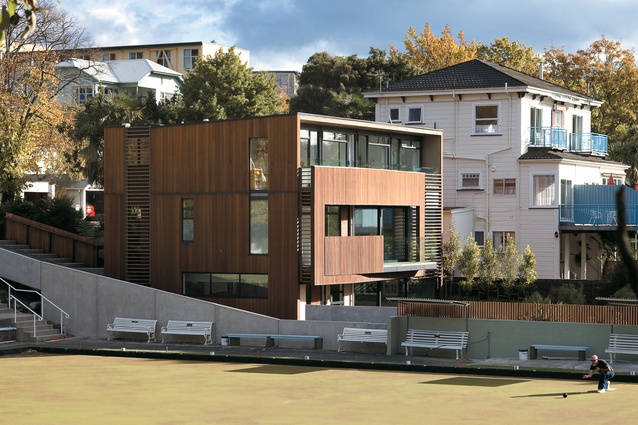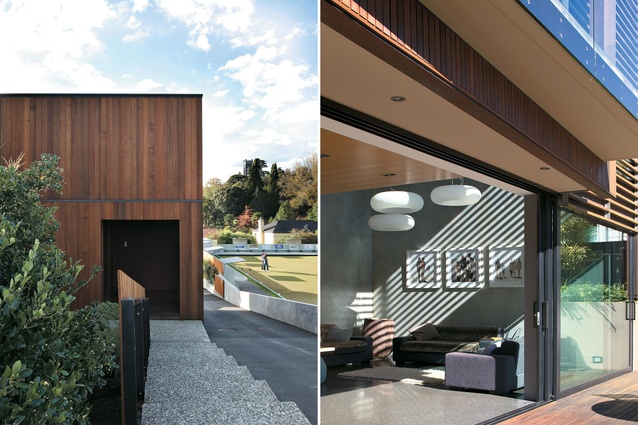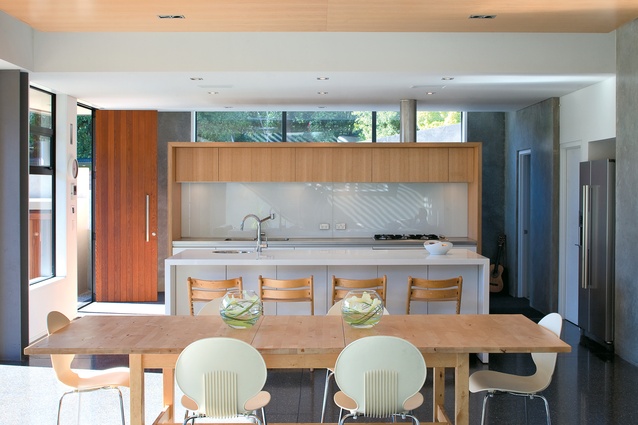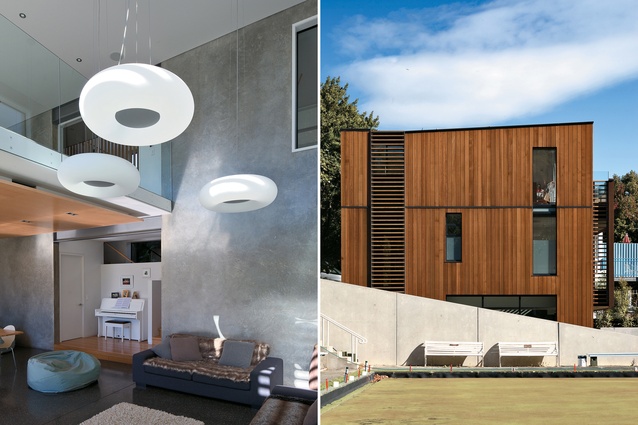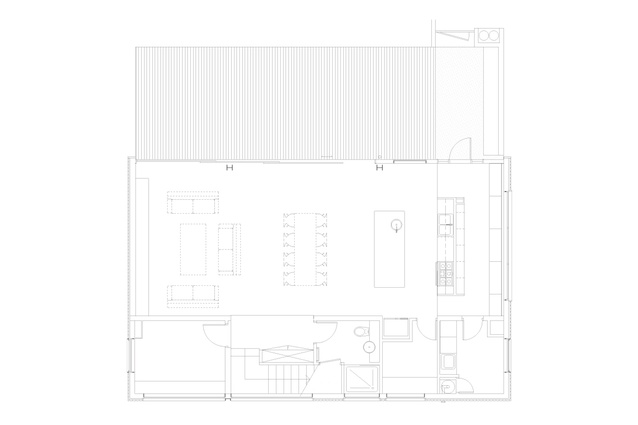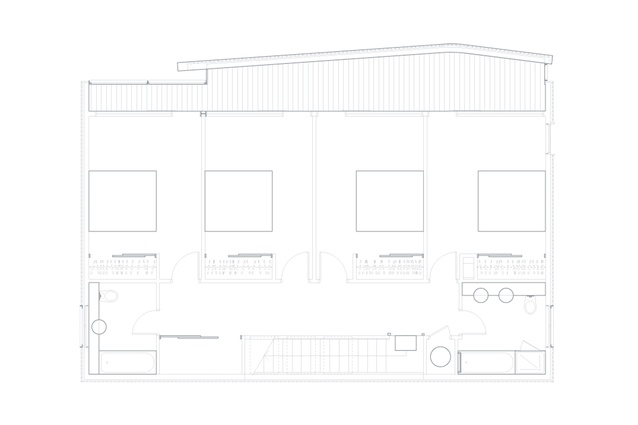Houses Revisited: Examiner Street House
A house in Nelson models a design solution that accounts for potential increases in site density.
It’s unusual to see a house in New Zealand that sits proper and upright on its site. Low slung pavilions and architecture that shifts with the land tends to be our architectural norm. However, this house in central Nelson designed by architect Marc Barron has been restricted to an upright three-storey rectangular box.
Notably, the form is not due to council restrictions or extremely limited and unstable ground, but derives from the architect’s desire for a backyard and to make the most of the sun, and from a consideration of potential future infill due to increasing density of the area.

The house is set back five metres from the street, but due to the site’s steep slope, entrance is below street level. On the house’s north face its three-storey height is revealed, but on the south-facing street façade the house only appears as two storeys. The bold south elevation has been softened with native planting and this elevation establishes a balanced relationship between its neighbours – a large three-storey motel and the open landscape of Nelson Bowling Club.
The three-storey house maximises the opportunity for all principal rooms to have north-facing frontage, which also preserves privacy from the street. Circulation and secondary rooms are located to the south of the house, and act as a buffer between private and public, as well as cold and warm spaces.

To capitalise on this planning solution the house employs solar heating principles, utilising its concrete tilt panel construction and exposing the concrete internally to act as thermal mass. To retain the captured heat, the house has been insulated on the outside face and then clad with vertical cedar weatherboarding to create an insulated rain-screen.
Throughout the house Barron has utilised various raw and contrasting materials, and the external cedar slats works to embellish those surfaces, casting interesting shadows on them. Although from the exterior this house could be described as upright or proper, its response illustrates a model of residential architecture which can be employed on sites that don’t allow for a house that casually lounges across a landscape. It is a house that has maximised the use of space and, if necessary, it is a design that will succeed on a denser site.
This article first appeared in Houses magazine


